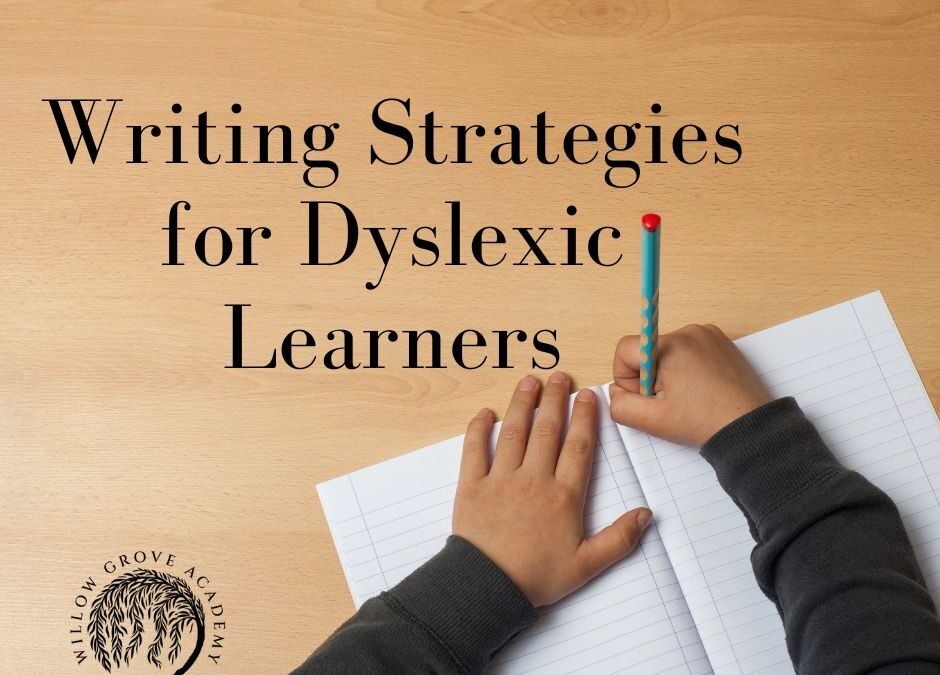In addition to reading, writing can sometimes be a challenge for a dyslexic learner.
As with reading instruction, writing instruction needs to be approached with a plan in order to ensure success.
Understandably, since dyslexia is a language-based disability, anything that involves language, be it written or spoken can be a struggle. How you approach written language is important to deliver results while minimizing stress on your child.
Don’t put off writing instruction just because you know it is going to be hard or because you know your child doesn’t want to do it.
It likely isn’t that your child doesn’t want to do it, it might just be that it is hard and something they knows is going to require significant effort. This is where you can help make it manageable.
Be sure to preface the writing instruction with grammar.
Having a good grasp on grammar (complete sentences, run-ons, fragments, punctuation etc.) will build confidence in the writing process and help your child understand how to craft a good sentence.
Start small. Begin with just a few sentences and move from there. Don’t move on to paragraphs until they are good at writing sentences.
Keep all of the writing assignments in a notebook.
You will be surprised at the progression your child makes throughout the school year and they need to see it too. This will do wonders for their self-confidence!
As you move on to paragraphs, begin each writing session with a discussion and brainstorm session. Give clear instructions, and then write out a loose plan.
If handwriting is hard too, be the scribe or allow your child to type it. Discuss what you are going to write about. This is very informal and is really just putting ideas on paper so when the time comes to complete the writing assignment, there is already some direction.
As you progress to paragraphs and essays, try to offer subjects your child is interested in. It is always easier to write about something you have an opinion about or that you want to talk about. Also, offer just a few choices. Too many choices or not offering enough direction can feel overwhelming to a new writer.
Write more often in smaller chunks- daily would be ideal. Having a daily plan of reading and writing together will help develop both sets of skills faster. This does not need to be for long periods of time, a little instruction in each subject goes a long way!
Keep assignments short. It can be so exciting to hit the ground running at the first signs of success. Take it slow until you see consistent mastery of sentences and paragraphs before you take on essays and term papers.
As you take on larger writing projects, write together. You modeling how to put together a 3 paragraph essay for example, can help take the stress out of writing a longer assignment and give her some solid direction.
Teach your child to edit writing assignments every time before a paper is finished.
Even famous authors have editors and spend significant time perfecting their writing. Also creating a rubric can be helpful to serve as a reminder. Hints such as using capital letters at the beginning of each sentence, checking punctuation, looking for spelling errors, and making sure the sentences are organized logically is a good place to start. This sets up good writing habits regardless of the age or level of your student.
As you set up the routine of writing instruction, be sure to be consistent. As with any instruction with a struggling learner, having a structured plan reduces stress and increases confidence.
As you develop a routine, you will start to see her confidence soar and who knows, she might even start to enjoy the process!

